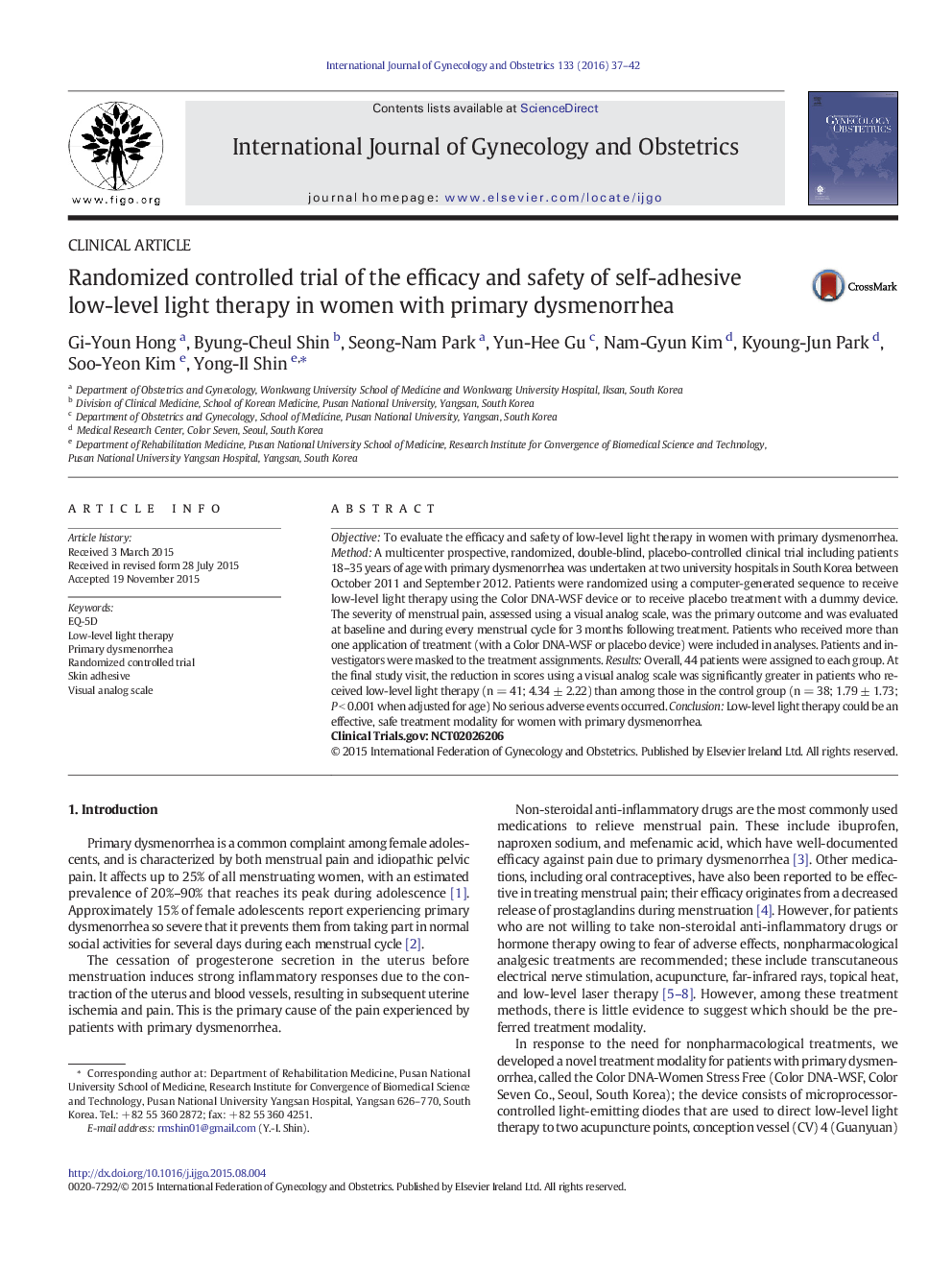| Article ID | Journal | Published Year | Pages | File Type |
|---|---|---|---|---|
| 3952144 | International Journal of Gynecology & Obstetrics | 2016 | 6 Pages |
ObjectiveTo evaluate the efficacy and safety of low-level light therapy in women with primary dysmenorrhea.MethodA multicenter prospective, randomized, double-blind, placebo-controlled clinical trial including patients 18–35 years of age with primary dysmenorrhea was undertaken at two university hospitals in South Korea between October 2011 and September 2012. Patients were randomized using a computer-generated sequence to receive low-level light therapy using the Color DNA-WSF device or to receive placebo treatment with a dummy device. The severity of menstrual pain, assessed using a visual analog scale, was the primary outcome and was evaluated at baseline and during every menstrual cycle for 3 months following treatment. Patients who received more than one application of treatment (with a Color DNA-WSF or placebo device) were included in analyses. Patients and investigators were masked to the treatment assignments.ResultsOverall, 44 patients were assigned to each group. At the final study visit, the reduction in scores using a visual analog scale was significantly greater in patients who received low-level light therapy (n = 41; 4.34 ± 2.22) than among those in the control group (n = 38; 1.79 ± 1.73; P < 0.001 when adjusted for age) No serious adverse events occurred.ConclusionLow-level light therapy could be an effective, safe treatment modality for women with primary dysmenorrhea.Clinical Trials.gov:NCT02026206
